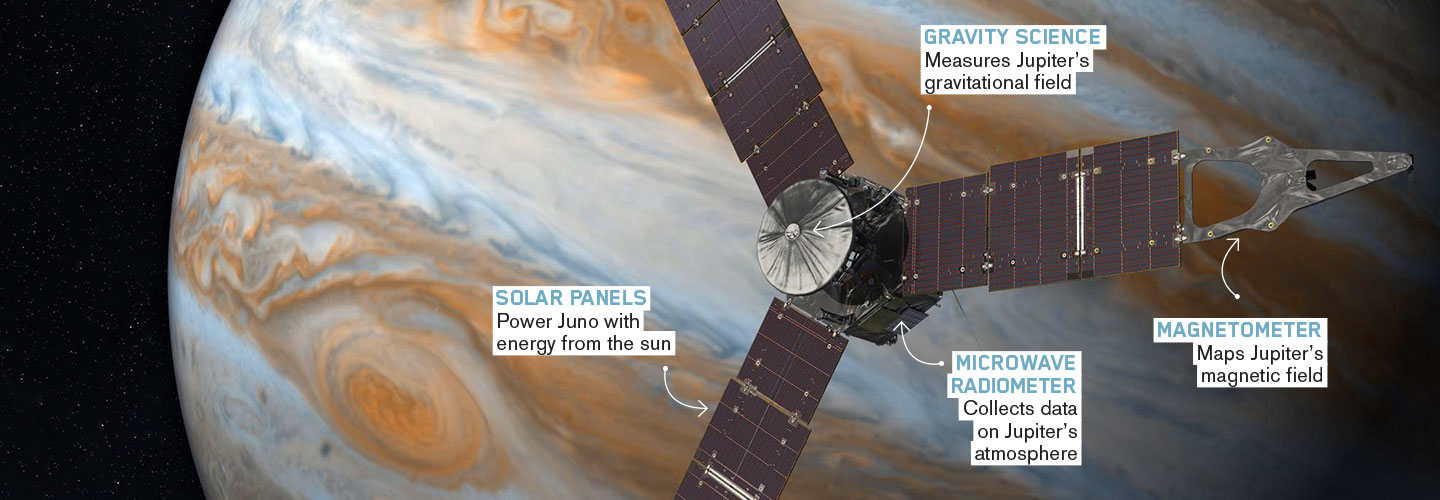On July 4, NASA scientists nervously gathered in a mission control room in Pasadena, California. They were waiting to find out if a spacecraft called Juno had reached Jupiter. At 8:53 p.m. Pacific Time, the scientists received a series of beeps. The control room erupted with cheers: The signal, broadcast by Juno, meant the spacecraft had made it.
“We only had one chance to get it right,” says Steven Levin, Juno’s project scientist. “So I was really relieved when Juno arrived safely.”
On July 4, NASA scientists nervously gathered in a mission control room in Pasadena, California. They were waiting to find out if a spacecraft called Juno had reached Jupiter. At 8:53 p.m. Pacific Time, the scientists received a series of beeps. The control room filled with cheers. The signal came from Juno, and it meant the spacecraft had made it.
“We only had one chance to get it right,” says Steven Levin, Juno’s project scientist. “So I was really relieved when Juno arrived safely.”

